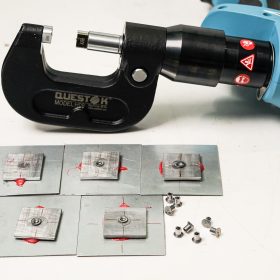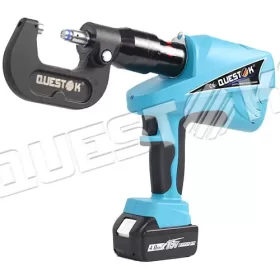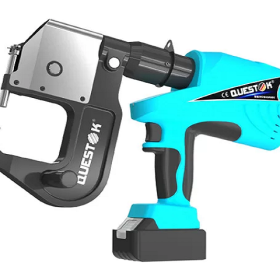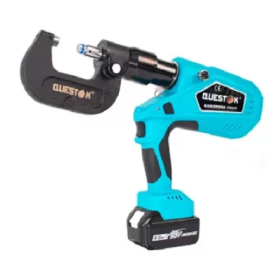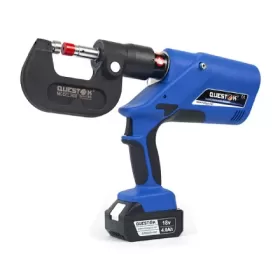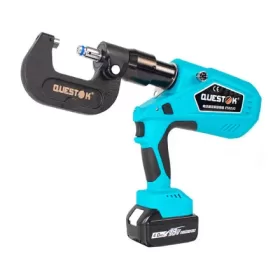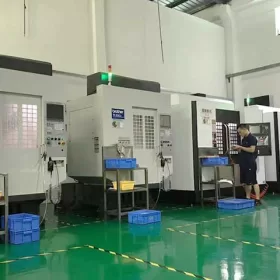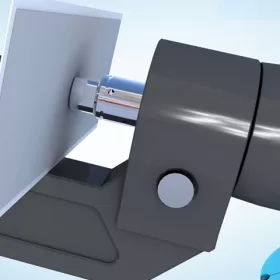Troubleshooting Issues with Stainless Steel Riveting
Stainless steel riveting is a robust and versatile joining method widely used in various industries. However, like any technique, it can encounter challenges that affect its effectiveness. This article explores common issues and solutions related to stainless steel riveting, providing guidance for troubleshooting and ensuring optimal results.
Rivets Not Setting Properly
If rivets fail to set correctly, it could indicate several problems. First, ensure that the rivet is the appropriate size for the material and application. Using rivets that are too small or too large can hinder proper setting. Additionally, check the riveting tool; it should be calibrated and in good working condition. Insufficient force or misalignment can prevent rivets from seating fully.
Loose or Weak Rivets
Loose or weak rivets can result from inadequate hole preparation or incorrect riveting techniques. Ensure that the holes are correctly sized and deburred to provide a clean and secure surface for the rivet. Also, verify that the rivets are inserted straight and driven with the appropriate amount of force. Too little force may leave the rivet loose, while excessive force can damage the material or rivet.
Corrosion and Discoloration
Stainless steel is generally corrosion-resistant, but environmental factors can lead to discoloration or corrosion. Check the surrounding environment for potential sources of contamination, such as moisture, salt, or chemicals. Use corrosion-resistant rivets and sealants to prevent moisture ingress and protect against harsh conditions.
Material Damage
Stainless steel riveting can occasionally cause damage to the surrounding material. Avoid overtightening the rivets, as this can create excessive force and warp or deform the material. Additionally, use rivets that are compatible with the material and avoid sharp burrs or jagged edges that could cut or scratch the surface.
Riveting Technique
Proper riveting technique is essential for success. Operators should be trained and experienced in the process. Ensure that the rivet gun is properly aligned and held perpendicular to the surface. Apply the appropriate amount of force and avoid any sudden jolts or movements that could affect the rivet’s setting.
Material Considerations
The type of stainless steel used can also influence the riveting process. Different alloys have varying properties, such as hardness and corrosion resistance. Choose the appropriate stainless steel grade based on the specific application requirements and compatibility with the rivets being used.
Conclusion
Troubleshooting issues with stainless steel riveting requires a systematic approach. By identifying the root cause of the problem and applying appropriate solutions, you can ensure the integrity and performance of riveted joints. Regular maintenance, inspection, and adherence to best practices will help mitigate potential issues and ensure the longevity and reliability of stainless steel riveted assemblies.
- Company News
- Industry News
- Tag
- Tags
-
The Advantages of Questok Rivet Guns: Precision, Efficiency, and Durability
In industrial fastening applications, the choice of tools directly impacts productivity, safety, and long-term cost-effectiveness. Questok rivet guns have emerged as a standout solution for professionals across aerospace, automotive, and construction sectors. Combining advanced engineering with user-centric design, these tools deliver unmatched performance. Below are the key advantages that make Questok rivet guns a preferred choice:
-
Rivet Gun FAQ
Rivet Gun FAQ-SPR
-
Fast Assembly and Repair With Cordless Solid Rivet Gun
Questok cordless solid rivet gun stands out as a pivotal innovation, merging portability with power to facilitate efficient and effective fastening in a myriad of applications.
-
Redifine The Role of Self-piercing Riveting Gun Machine
Self-piercing riveting adopts high-speed mechanical fastening skill that joins thin sheet materials, typically steel and aluminum alloys.
-
The Latest Innovations in Clinching Tool Design
Explore the latest innovations in clinching tool design, redefining precision, efficiency, and versatility in material joining.
-
The Application and Maintenance of Self-Piercing Rivet Guns
Delve into the applications of self-piercing rivet guns in the automotive and aerospace industries and reveal the essential maintenance practices that ensure their accuracy and efficiency.
-
Rivetless Riveting Gun for Ventilation Duct Projects
The ventilation duct rivetless gun is a tool for riveting ventilation ducts without rivets.
-
Guide to Using Self-Piercing SPR Riveting Gun
In the automotive industry, self-piercing SPR (Self-Piercing Rivet) riveting guns are commonly used for joining metal components in vehicle bodies, including BMW vehicles.
-
Rivet Gun FAQ
Rivet Gun FAQ-SPR
-
Versatile Fastening- Applications of the Handheld Rivet Gun Across Industries
In the realm of fastening, the handheld rivet gun stands as a testament to ingenuity and versatility. Its ability to effortlessly join materials with sheer strength and permanence has revolutionized manufacturing and construction processes, leaving an enduring mark on diverse industries. Aerospace: Where precision and reliability are paramount, the rivet gun shines. In aircraft assembly, […]
-
Time-Saving Tools- Speeding Up Projects with Electric Blind Rivet Guns
In the whirlwind of project deadlines, every minute counts. But what if there was a tool that could dramatically reduce assembly time, giving you an edge in the race against the clock? Enter the electric blind rivet gun: your secret weapon for lightning-fast and effortless riveting. Electric blind rivet guns are the ultimate time-savers for […]
-
Streamlining Fastening- How an Electric Blind Rivet Gun Enhances Efficiency
Introduction In the realm of manufacturing and assembly, fastening plays a crucial role in securing components and ensuring structural integrity. Traditional manual rivet guns, while reliable, are often time-consuming and labor-intensive. The advent of electric blind rivet guns has revolutionized the fastening process, significantly enhancing efficiency and productivity. This article delves into the benefits of […]
-
The Role of Automation in Electric Rivetless Clinching
Electric rivetless clinching (ERC) is a lightweight joining process that eliminates the need for rivets or other fasteners. This can lead to significant cost savings and increased production efficiency. Automation plays a critical role in ERC, enabling high-speed and high-volume production. Automated Feed Systems Automated feed systems are used to accurately position the two workpieces […]
-
Why Choose a Universal Self-Piercing Riveting Gun for Your Projects?
In the realm of construction and fabrication, riveting guns stand as indispensable tools for creating secure and robust connections. Among the various types available, universal self-piercing riveting (SPR) guns have emerged as a game-changer due to their versatility and efficiency. This article will delve into the compelling reasons why choosing a universal self-piercing riveting gun […]
-
Why Choose Stainless Steel Hollow Rivets for Your Projects?
In the world of industrial manufacturing, choosing the right fasteners for your projects is crucial for ensuring longevity and reliability. Among the many options available, stainless steel hollow rivets stand out as a superior choice for a wide range of applications. This article delves into the compelling reasons why stainless steel hollow rivets are the […]
-
Top Trends in Electric Rivetless Clinching Guns
In the realm of fastening technology, electric rivetless clinching guns have emerged as a revolutionary solution for a wide range of industrial applications. These advanced tools offer several преимущества and capabilities, revolutionizing the way businesses approach their fastening needs. Adoption of Brushless Motors Brushless motors have gained significant traction in electric rivetless clinching guns due […]
